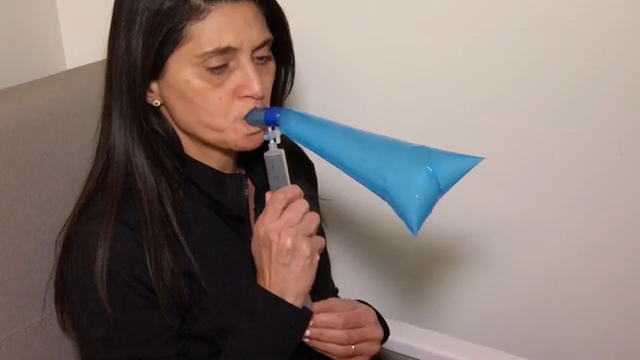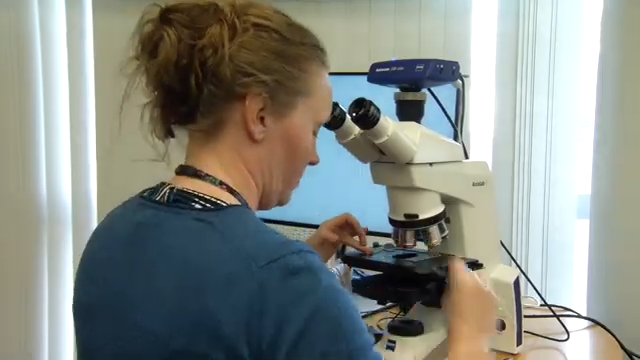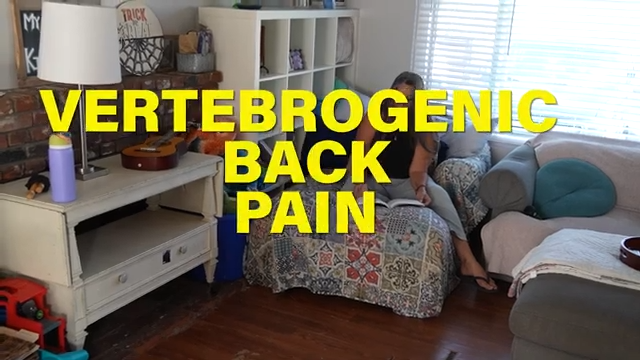SALT LAKE CITY, Utah. (Ivanhoe Newswire)— A half a million people are living with cerebral palsy right now. CP is the most common of all childhood disabilities, affecting movement and posture and is most often caused by lack of blood flow to the brain at birth. The earlier it’s diagnosed; the sooner treatments and therapies can begin. A new breakthrough may help to change the lives of these children forever.
Whenever you see Wallie, Ollie won’t be too far away. These two-year-old twins have been through a lot together.
“He was one pound 13 ounces, and he was one pound 15 ounces,” recalled their mom, Hilary Davis.
“Roughly the size of a dollar bill,” their dad, Casey Davis described.
Born at 26 weeks, Ollie thrived, while Wallie …
“We start to find out that he’s had really serious brain bleeds,” explained Casey.
“His chances for cerebral palsy were really, really high,” Hilary shared.
“Though the injury can happen around the time of birth. We often don’t know until months or years later,” described Betsy Ostrander, MD, pediatric neurologist at University of Utah Health and Intermountain Primary Children’s Hospital. This effort is funded by the Cerebral Palsy Foundation and is part of a multi center Early Diagnosis of Cerebral Palsy Initiative.
Pediatric neurologist Betsy Ostrander is spearheading a study to detect cerebral palsy earlier than ever before.
“Their movements tend to be very stiff and contracted, and the babies seem almost uncomfortable,” illustrated Dr. Ostrander.
Videos are taken of the babies on their due date …
“We watch the video because it’s so hard when you’re looking at a baby to appreciate these very fine movements,” elaborated Dr. Ostrander.
MRI brain images are taken, combined with the Hammersmith Infant Neurologic Exam that evaluates 26 different movements. These tests can reduce the diagnosis from an average of 19.5 months to nine and a half months. The difference can be life changing.
“If we’re not diagnosing kids until three or four, we’re losing the ability to harness the brain’s natural plasticity to work around those areas of injury and develop new pathways that can help them,” explained Dr. Ostrander.
For Wallie, an early diagnosis led to early therapies. Giving Wallie the best chance yet to keep up with his brother.
“Even ten years ago he wouldn’t have lived past birth. It’s incredible. It’s a miracle,” shared Casey.
The research is still ongoing. Now that researchers know early diagnosis of cerebral palsy is possible, they will focus on which interventions will be most effective.
Contributors to this news report include: Cyndy McGrath, Executive Producer; Marsha Lewis, Field Producer; Rusty Reed, Videographer; Roque Correa, Editor.
To receive a free weekly e-mail on Medical Breakthroughs from Ivanhoe, sign up at: http://www.ivanhoe.com/ftk
Sources:
MEDICAL BREAKTHROUGHS
RESEARCH SUMMARY
TOPIC: SAVING LITTLE WALLIE: BREAKTHROUGH TEST FOR CEREBRAL PALSY
REPORT: MB #4824
BACKGROUND: Cerebral palsy (CP) is a group of disorders that affect a person’s ability to move and maintain balance and posture. Cerebral means having to do with the brain. Palsy means weakness or problems with using the muscles. It is the most common motor disability in childhood. The cause is usually abnormal brain development or damage to the developing brain that affects a person’s ability to control his or her muscles. Someone with severe CP might need to use special equipment to assist with walking or might not be able to walk at all and need lifelong care. Someone with mild CP might walk a little awkwardly and not need any special help. CP does not get worse over time, though the exact symptoms can change over a person’s lifetime.
(Source: https://www.cdc.gov/ncbddd/cp/facts.html)
SIGNS AND SYMPTOMS: Cerebral palsy can affect the whole body or be limited primarily to one limb or one side of the body. The brain disorder causing cerebral palsy doesn’t change with time, so the symptoms usually don’t worsen with age. As a child gets older, some symptoms might become more or less apparent. Muscle shortening and muscle rigidity can worsen if not treated aggressively. Some movement and coordination problems associated with cerebral palsy include stiff muscles and exaggerated reflexes; lack of balance and muscle coordination; tremors or involuntary movements; delays in reaching motor skills milestones, such as pushing up on arms, sitting up or crawling; favoring one side of the body, such as reaching with one hand or dragging a leg while crawling; excessive drooling or problems with swallowing; delays in speech development or difficulty speaking and seizures.
(Source: https://www.mayoclinic.org/diseases-conditions/cerebral-palsy/symptoms-causes/syc-20353999)
ORTHOTICS BREAKTHROUGH: Researchers have confirmed that adapting splints in combination with the footwear used by disabled children to help cerebral palsy patients walk, can decrease the energy they use by as much as 33 percent. Nachi Chockalingam, Professor of Clinical Biomechanics at Staffordshire University, explained, “We know that children with cerebral palsy use more energy to walk and our team has found fine-tuning splints to suit the individual needs of a child can make a huge difference to their overall mobility.” Researchers analyzed the walking pattern of children with cerebral palsy. Participants were assessed while barefoot and with both tuned and non-tuned splints. Children wearing the fine-tuned splints showed improvements in several areas including hip and pelvic function and knee extension, while a non-tuned splint potentially showed a decrease in hip function. This effort is funded by the Cerebral Palsy Foundation and is part of a multi center Early Diagnosis of Cerebral Palsy Initiative.
(Source: https://medicalxpress.com/news/2020-06-orthotics-breakthrough-children-cerebral-palsy.html)
FOR MORE INFORMATION ON THIS REPORT, PLEASE CONTACT:
JULIE KIEFER
801-597-4258
If this story or any other Ivanhoe story has impacted your life or prompted you or someone you know to seek or change treatments, please let us know by contacting Marjorie Bekaert Thomas at mthomas@ivanhoe.com




